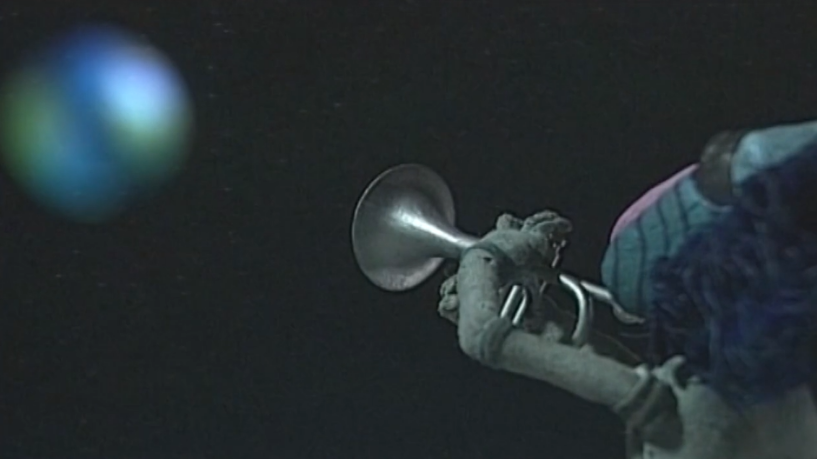Freeze Frame
Using the pause button allows the learner to focus on particular shots in the text (and also to appreciate that each shot is made up of a series of still images). By examining such things as the angle, distance and movement of the camera, and the use of lighting, colour and composition, the reader can learn how every element of a visual image can carry meaning, and how visual images can be ‘read’ like any other text.
You can analyse individual clips and sequences of clips in detail to tease out their subtleties and identify particular visual compositions, camera techniques and shot sequences.
You might find it useful to use our Camera: Spot the Shots worksheet, Basic Camerawork worksheet or our Introduction to Screen Language - Camerawork PowerPoint for these exercises.

Techniques to look for
- Camera Shots: Are any types of shot used more frequently than others? How are they used? Are there any used in judicious moments for special effect? What is that effect?
- Camera Angles: Is there any consistent pattern or system to the use of lenses and angles?
- Camera Movements: Are there any specific camera movements employed (e.g. tracking shot, crane shot, pan, zoom, focus pulls…)? Any repeated uses? Are any techniques conspicuous by their absence? Where and how are they used to reveal new information and create specific effects or moods?
- Edits: Are any types of cut (on any of the layers) used more frequently than others? What effect does this help produce?
- Transitions: Are there any interesting uses of transitions during the film? (For example, the way that flashback or dream sequences are used and, in more complex films, how they are structured and to what purpose.)
- Composition: Are there any specific compositional techniques or lighting systems that are being used to influence the audience?
Typical questions
- What or who can you see in this shot? What difference would it make if it were composed differently?
- Where is the camera in this shot? What difference would it make if the camera was moved?
- Does the camera move or is it fixed? What impression does that create?
- What can you tell about the time and setting from the colour in this shot?
- What can you tell about the characters from the background or setting?
- What can you tell about the relationship between the characters from the camera angles in this sequence?
